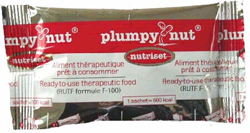This month’s San Francisco Chronicle column evolved in answer to a question from a former colleague at the UCSF School of Medicine.
Q: What do you think doctors should be telling patients about how best to care for themselves and their families, nutritionally?
A: I had my chance when, long ago, I ran a nutrition education program for medical and other health professions students and practitioners at UCSF.
Then, as now, it was obvious that just about every patient who landed in the hospital needed nutrition intervention. Practically everyone who visited the outpatient clinic either wanted or needed nutrition advice.
Then, as now, few doctors were taught anything about nutrition, let alone the details of what they needed to know to help patients address dietary concerns.
In today’s health care environment, even doctors with advanced nutrition training do not have time to use it. Blame this on how our health care system systematically rewards doctors for treatment of disease, not its prevention.
What doctors need to tell patients about nutrition depends on who the patients are. If people are sick, doctors need to talk to them about how dietary changes and improvements will help them recover and prevent further illness.
But I’m guessing that your question refers to healthy patients who want to stay that way. With these people, what doctors do and say can have profound effects. Doctors are authority figures and their advice is taken seriously.
As a standard part of patient care, doctors routinely ask about drugs, cigarettes and alcohol. Even if they only have a minute, adding one more question about diet can do much good. If nothing else, it conveys that diet matters to health.
Given the reality of time constraints, my wish list for what to do next is necessarily short.
Tell patients that healthy eating simply means three things: variety, minimal processing and moderation.
Variety means choosing many different kinds of foods from the various food groups: meat, dairy, fruits, vegetables, grains. It counts because foods vary in nutrient content. Varying foods within and among food groups takes care of needs for nutrients without having to think about them. People who consume adequate amounts of varied diets rarely exhibit nutrient deficiencies. It’s the most restrictive diets that are likely to be deficient in one or another nutrient.
Minimal processing means that the foods should be as close as possible to how they came from the animal or plant. The greater the level of processing, the less the foods resemble their origins, the less nutritious they may be, and the more salt, sugar and calories get added to disguise the changes.
Minimal processing excludes foods high in salt and sugars and low in fiber, as well as sugary sodas and juice drinks, those popularly known as junk foods.
My definition of minimal processing is only slightly facetious: Don’t eat anything with more than five ingredients or an ingredient you can’t pronounce.
Moderation is about balancing calorie intake with expenditure and maintaining a healthy weight through food choices and physical activity.
These are general principles. Beyond them, nutrition advice must be personalized to the particular individual or family. To do that quickly:
- Ask patients what they and their children eat. You can start with a waiting-room questionnaire that probes typical intake of foods and supplements.
- Screen the responses for variety, minimal processing, moderation and excessive or unusual supplement use. Note whether body weights are within healthy ranges.
- Reassure patients whose diets are varied, minimally balanced and moderate that they are doing wonderful things for their health and should keep doing what they are doing.
- Refer observations that need further discussion to a nutritionist.
Doctors: You don’t have to do it all. Making it clear that diet matters is often enough to encourage patients to make better dietary choices. Use the services of a nutritionist. Nutritionists are professionally trained to answer patients’ questions about diet and health and to counsel them on dietary interventions.
Patients (meaning everybody): Tell your doctors that you want their advice about diet and health and expect them to know something about it.


